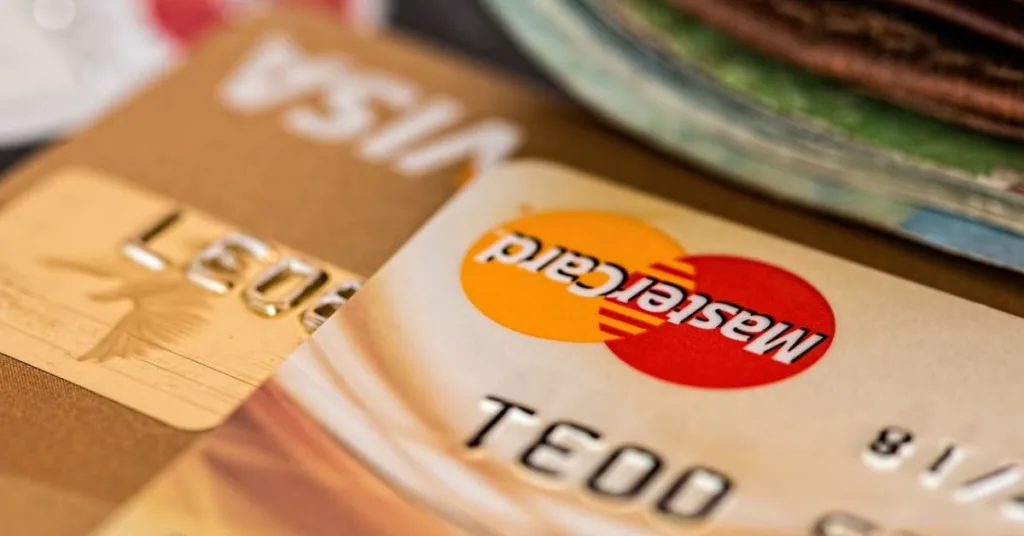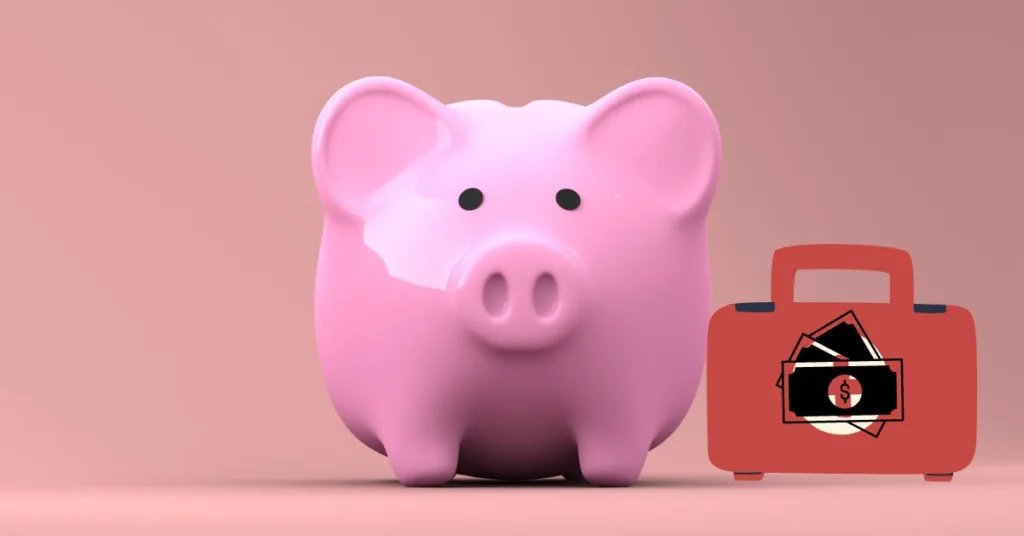This post may contain affiliate links to products or services. I may receive a commission for purchases made through these links with no cost on you. Please read my disclosure for more information.
Do you want to learn how to manage credit card debt?
Nowadays, credit cards have become an indispensable tool for managing finances, offering convenience and flexibility. However, if not managed properly, it can also lead to crippling debt.
With interest rates often soaring, it’s crucial to have a solid plan in place to manage credit card debt effectively.
I’ve heard a lot of stories regarding credit cards debts, and some are being sued because they are unable to pay their credit card debt.
When I learned how much they owe, I was in shocked. I wondered, how on earth did they acquired that huge amount of debt? And how they can repay that amount with their salary?
When I had my own credit card, I was kind of hesitant to use it because of the negative feedback I receive from people. But if you manage it properly, credit card is not as bad as it seems.
IMPORTANCE OF MANAGING CREDIT CARD DEBT
It’s important to manage your credit card debt for several reasons:
- Managing your credit card debt is crucial for maintaining financial stability and avoiding financial distress.
- By effectively managing your debt, you can avoid excessive interest charges and save money in the long run.
- Managing your credit card debt reduces stress and promotes mental well-being by alleviating financial anxiety.
- Effective debt management is an essential aspect of your overall financial health, contributing to long-term financial stability and success.
- By managing your credit card debt, you can avoid potential financial pitfalls such as bankruptcy or foreclosure.
- Prioritizing debt management helps you build financial discipline and fosters healthy financial habits for the future.
- Responsible debt management helps preserve your credit scores, making it easier for you to qualify for favorable terms on loans and other financial products.
7 TIPS ON HOW TO MANAGE CREDIT CARD DEBT
If you find yourself drowning in credit card debt, fret not. Here are seven steps to help you regain control of your finances:
1. Face the Reality
The first step in managing credit card debt is acknowledging its existence. Ignoring it will only make matters worse. You cannot run or hide from your creditors.
First, gather all your credit card statements. Then, tally up your total debt, and understand the interest rates and minimum payments required for each card.
Facing the reality of your situation is the first step towards taking control.
2. Create a Budget
Once you have a clear picture of your debt, it’s time to create a budget.
Identify your monthly income and allocate specific amounts for necessities like rent, utilities, groceries, and transportation.
Allocate a portion of your income towards paying off your credit card debt. Be realistic and make sure your budget is sustainable over the long term.
Recommended reading:
7 Steps in Making a Budget, How to Budget Money on Low Income
3. Follow a Credit Card Debt Payment Strategy
Not all debts are created equal. There are some debt repayment strategies that can effectively help you pay off your debts efficiently.
- Debt Snowball Method: This strategy involves paying off debts in order from smallest to largest balance regardless of interest rate. By focusing on paying off smaller debts first, individuals gain momentum and motivation as they see debts being eliminated, which can help them stay motivated to continue paying off larger debts.
- Debt Avalanche Method: The debt avalanche method involves prioritizing debts with the highest interest rates first while making minimum payments on other debts. This strategy minimizes the amount of interest paid overtime, potentially saving money compared to the snowball method.
Whichever strategy you choose, pick the one that that aligns with your financial situation and allows you to make consistent progress towards becoming debt-free.
4. Consider Debt Consolidation
If you’re struggling to keep track of multiple credit card payments, consolidating your debt into a single loan with a lower interest rate can simplify the repayment process.
Look for balance transfer credit cards or personal loans with favorable terms.
Make sure to read the fine print and understand any fees associated with consolidation.
5. Negotiate with Creditors
Instead of hiding, ignoring, or running away, reach out to your creditors if you’re having trouble making payments.
Many credit card companies are willing to work with you to create a more manageable repayment plan. It also shows the creditor that you are being responsible for your debt.
You may be able to negotiate lower interest rates, waive fees, or set up a payment schedule that fits your budget.
6. Cut Expenses and Increase Income
To accelerate your debt repayment, consider cutting back on discretionary spending.
Look for areas where you can trim expenses, such as dining out less frequently or canceling subscription services you don’t use.
Additionally, explore ways to increase your income, whether through overtime at work, ask for a raise, freelancing, or selling unused items.
Recommended reading:
How to Start Selling on Etsy in 6 Simple Steps, 24 Popular Digital Products to Sell on Etsy
7. Stay Committed and Seek Support
Managing credit card debt requires discipline and perseverance.
Stay committed to your budget and repayment plan, even when it feels challenging.
Surround yourself with a supportive network of friends and family who can offer encouragement along the way.
Celebrate small victories and stay focused on your goal of financial freedom.
By following these tips, individuals can take control of their credit card debt, reduce financial stress, and work towards achieving long-term financial stability.
MANAGE CREDIT CARD DEBT BY KNOWING SOME TERMINOLOGIES
As a consumer, understanding basic credit card terms empowers you to make informed decisions about your finances, avoid unnecessary fees, and manage your credit effectively. Here are some key terms:
- Credit Limit: The maximum amount of money you can borrow on your credit card. Exceeding this limit may result in overlimit penalties or declined transactions.
- Interest Rate (APR): The annualized interest rate charged on outstanding balances on your credit card. It’s important to know both the purchase APR and the APR for cash advances and balance transfers.
- Minimum Payment: The smallest amount you must pay each month to keep your account in good standing. Paying only the minimum can result in significant interest charges and prolong the time it takes to pay off your balance.
- Grace Period: The period during which you can pay your credit card bill in full without accruing interest charges. Grace periods typically range from 21, 25 or 30 days after the end of the billing cycle.
- Billing Cycle: The period between credit card statements. It determines when your purchases and payments are recorded and when your payment is due.
- Annual Fee: A yearly fee charged by some credit card issuers for the privilege of using the card. Not all credit cards have annual fees, but those that do may offer additional perks or rewards.
- Cash Advance: A transaction where you withdraw cash from your credit card account. Cash advances often come with high fees and interest rates and may not be subject to the same grace period as purchases.
- Balance Transfer: Moving the outstanding balance from one credit card to another, usually to take advantage of a lower interest rate or promotional offer. Balance transfers may incur fees and have terms and conditions that should be carefully reviewed.
CONCLUSION
In conclusion, while credit card debt can feel overwhelming, it’s not insurmountable.
By facing the reality of your situation, creating a budget, prioritizing high-interest debts, considering consolidation, negotiating with creditors, cutting expenses, and staying committed, you can take control of your finances and work towards a debt-free future.
Remember, it’s never too late to start managing your credit card debt effectively.
ACTION PLAN
1. List all your credit card debt.
2. Make a budget.
3. Choose a credit card payment strategy. Tip: You can use either Debt Snowball or Debt Avalanche method.
4. If you have multiple credit card debts, try consolidating them into one.
5. If you find it difficult to pay your debt, reach out to creditors and negotiate lower interest rates, waive fees, or set up a payment schedule that fits your budget.
6. Cut discretionary spending and look for additional source of income.
7. Stick to your commitment and ask support from those close to you.
Cheering on you!





